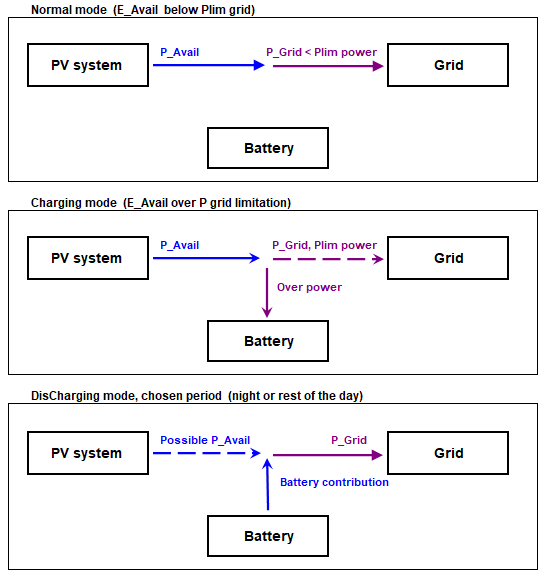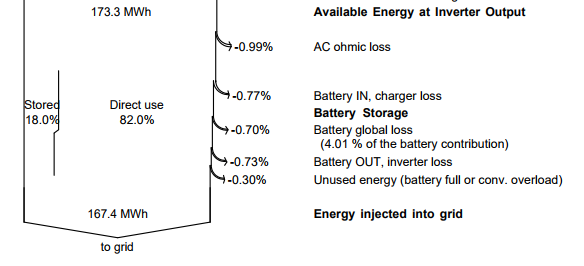|
<< Click to Display Table of Contents >> Storage: Power's peak shaving |
  
|
|
<< Click to Display Table of Contents >> Storage: Power's peak shaving |
  
|
For generalities about Grid storage: see Grid systems with storage..
For systems with DC converters on the PV array: see Peal shaving with DC converters.
When the injection power is limited by the grid manager, the overload energy could be stored in batteries.
This will have the advantages:
| - | for the PV plant owner, recovering the energy which would otherwise be lost (at the the price of an additional cost of the stored energy). |
| - | for the grid (large scale): regulate the renewable energy production. |
For doing this, we need a battery pack able to store the overpower produced during one day, of higher power than the specified limit.
In practice, if the limit is rather high the storage will only be used episodically, representing a high investment for a low benefit.
For being significant for the grid management, the limit should be rather low, this will require a very big storage system. The price of stored energy (especially due to cycling) becomes crucial for the PV plant profitability.
This mode doesn't involve an internal use of the energy: the energy fluxes are more simple.

Sizing
| - | First define the imposed grid limit power. This should of course be a fraction of the Max. PV power (clear sky conditions), shown on the dialog. |
| - | Define the max. power of the charger device: should be the "Max. input power (clear sky)" minus the "Grid Power limit". |
| - | The battery inverter power is not important: it may be lower than the charger power (discharge can last longer during the night). |
| - | Define the battery pack, which should ideally cover the maximum overload energy during a clear day. This may of course be lower for investment reasons. You should do some simulation tries for finding an optimal according to your financial requirements (taking also the cycling wear cost into account) . |
Simulation
The battery will have a daily cycle: it will always be empty at the end of the night, and will be charged only during good days.
After the simulation, the balances of all these energy flux will appear on the loss diagram:

The diagram shows:
- EBatDis: The amount of stored energy, which has an impact on the cycling, i.e. the battery lifetime,
- EBatCh - EBatDis: The battery storage efficiency loss (faradic efficiency, internal resistance, gassing),
- CL_Chrg, CL_InvB: The charger and battery inverter's efficiency losses,
- EUnused : There may be some unused energy, either when the battery is full, or if the charging power overcomes the maximum power of the charger.
- E_Grid : The only use of the electricity in this mode.
We can observe that the only benefit of this configuration is to enhance the system production for the grid when the PV array is highly oversized, at the price of an additional cost of the stored energy.